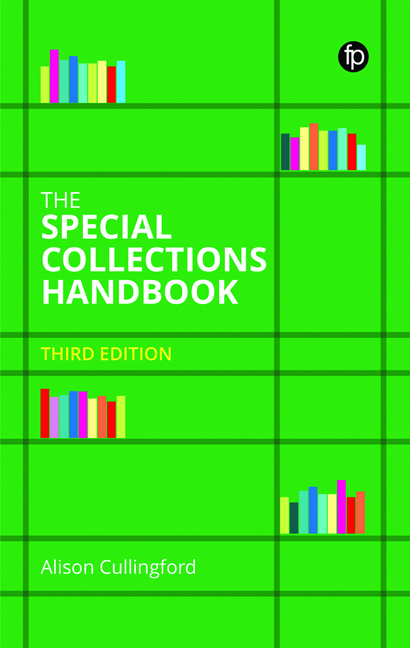Book contents
1 - Understanding Objects in Special Collections
Published online by Cambridge University Press: 28 April 2022
Summary
Introduction
This chapter introduces those formats that are the historic basis of Special Collections, as foundation collections or gathered by antiquarians and bibliophiles, along with the most common modern formats. Discover other formats via the sources at the end of the chapter.
This chapter covers:
1 Medieval manuscripts.
2 Early printed books (including typography, paper, illustrations and bindings).
3 Bibliography.
4 Provenance.
5 Printed books after the industrial revolution.
6 Important printed formats: private press, artists’ books, ephemera and other fugitive materials.
7 Audiovisual media, photographs and plastics.
8 Digital media.
9 Important collection types: archives, music, maps and realia.
10 Suggested further reading and useful websites.
A note on terminology
The term book is nowadays used for published works. However, the term originated to refer to folded sheets sewn into a binding (or, later, cut sheets glued into a case). The book had many advantages over rival formats like rolls, scrolls and tablets: it was portable, compact and made it easy to access any point in the text. To distinguish printed works from manuscripts bound in book form, the term printed book is used. Codex is another word for the book format, mostly now used for medieval manuscripts.
Bibliography is used for lists of books, such as the list at the end of this work, and also for the study of books as physical objects and how they were made. Codicology is the study of manuscripts and palaeography is the study of handwriting. The term diplomatics is also used and refers to the study of documents to establish whether they are authentic.
Librarians need to know these terms to communicate effectively with book historians, bibliographers and the antiquarian book trade and make sense of the materials in Special Collections. Other terms are defined as they occur in this book; see also the resources in Appendix A and at the end of this chapter.
Understanding medieval manuscripts
Until the invention of printing with movable type, knowledge was recorded and communicated in Europe via handwriting (and handwriting has continued in use ever since). Medieval manuscripts may be the most valuable, iconic and significant objects held by Special Collections. Each is a unique artefact with its own name, story and meaning, as the following two examples demonstrate. Produced within a few years of each other, they have different stories and appearance; both offer important historical insights.
- Type
- Chapter
- Information
- The Special Collections Handbook , pp. 3 - 28Publisher: FacetPrint publication year: 2022



